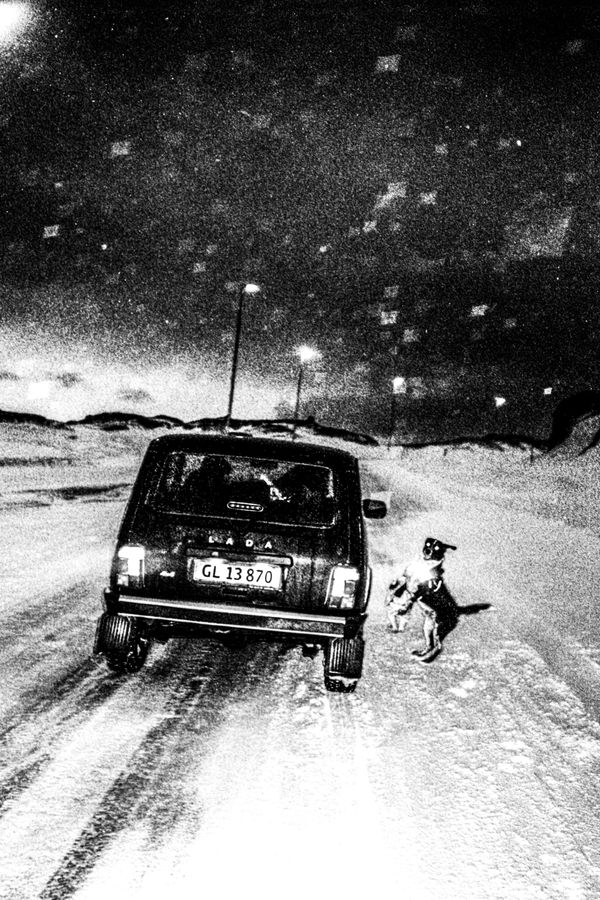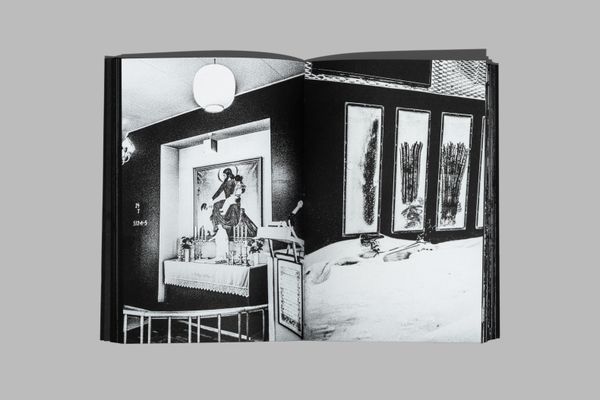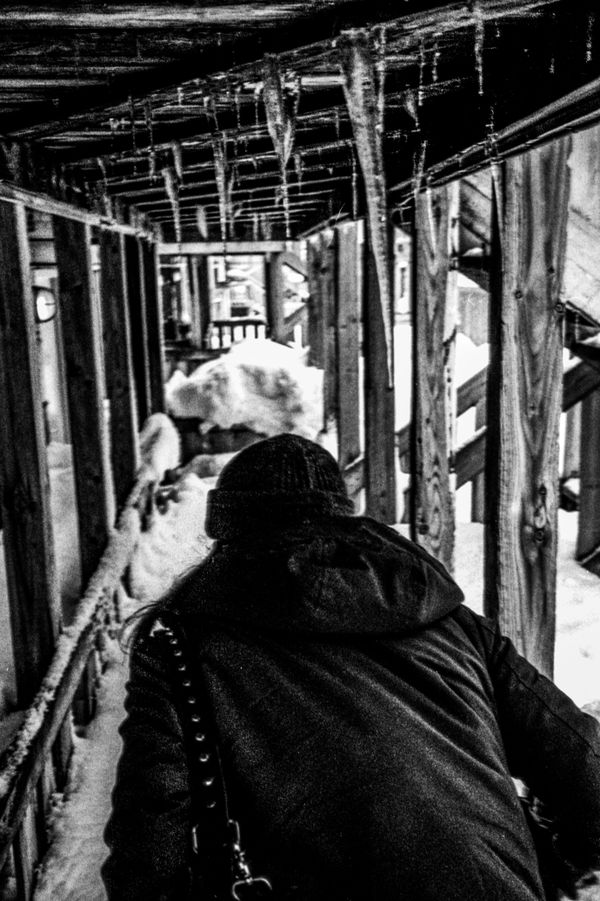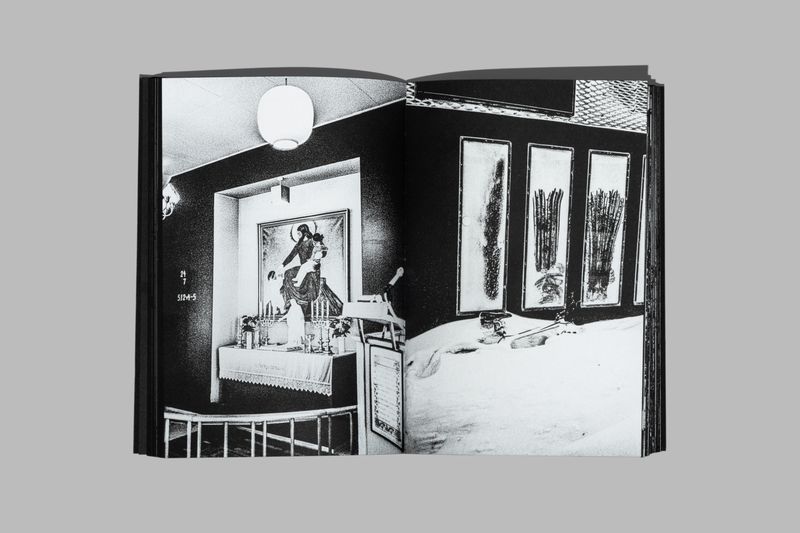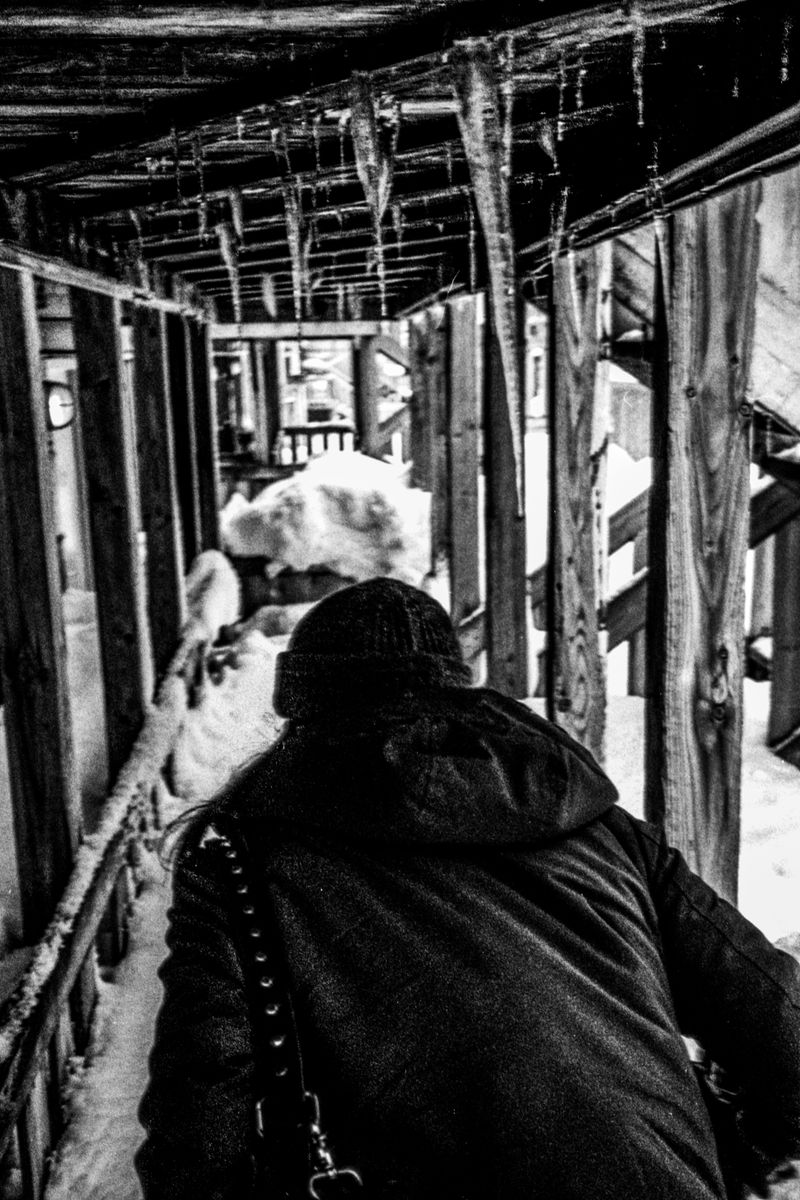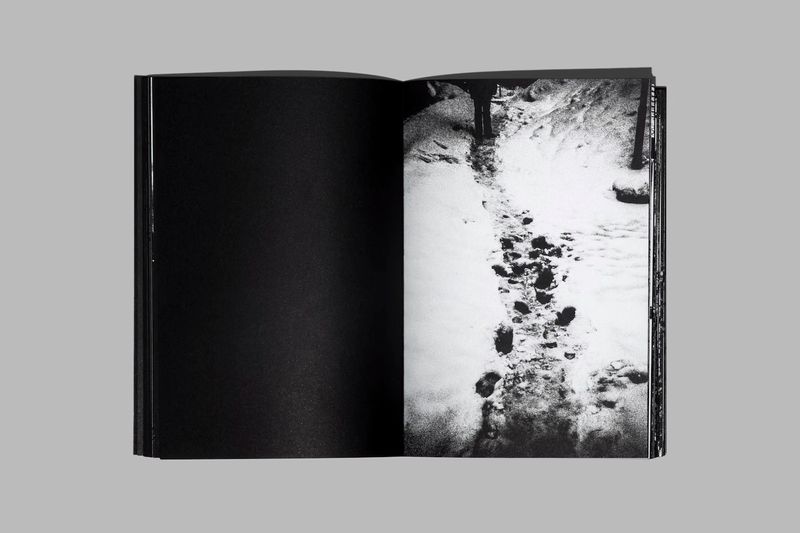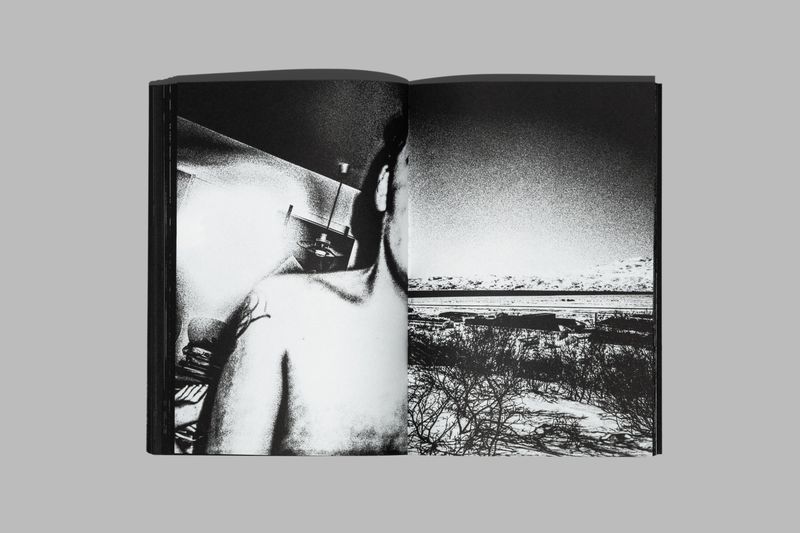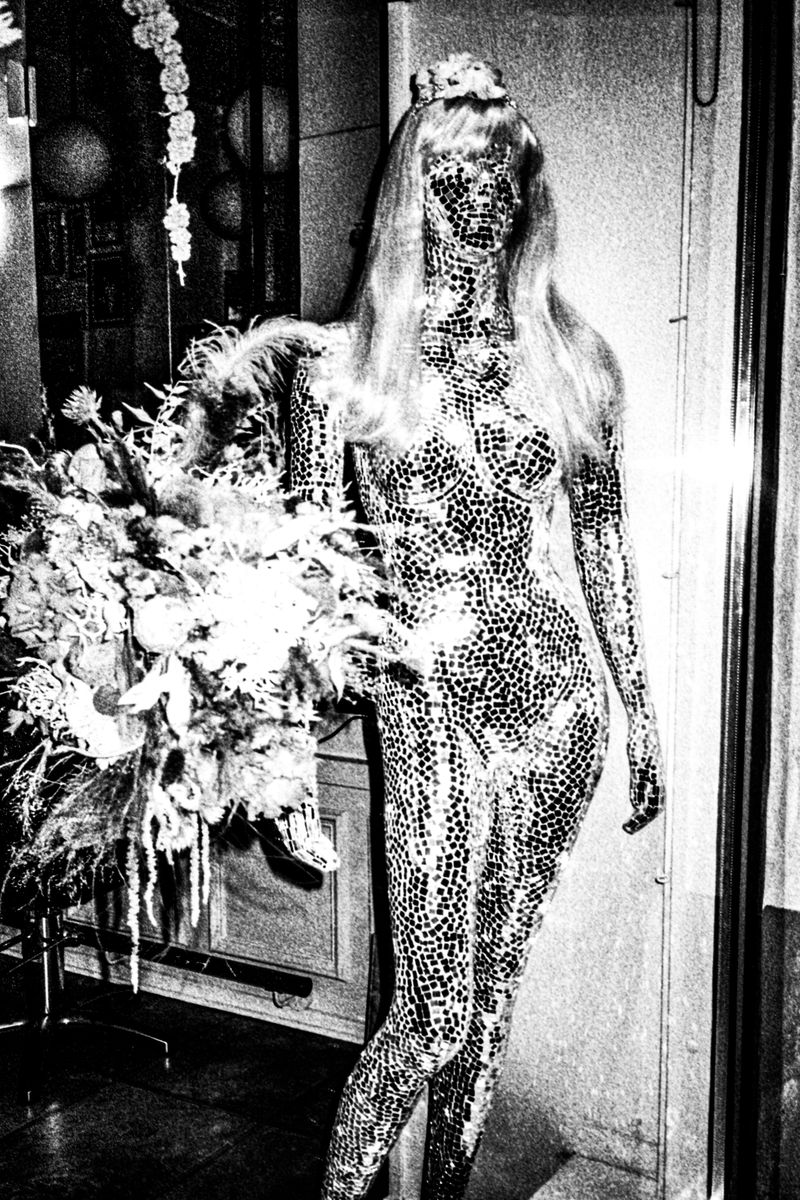Photobook Review: Necromancer by Innuteq Storch
-
Published25 Apr 2024
-
Author
- Topics Photobooks
Necromancer looks at the land of Greenland from the perspective of Innuteq Storch, a Greenlandic photographer. It’s a book where the isolation of the pandemic links to a Shamanic-tinged perspective of the thin places of Greenland’s frigid interior.
The idea for the book originated during the height of the Covid years, but it goes beyond that to show the hard edges of the Greenland environment, the intrusions of the built environment, and the strange magic of a country where one perpetually lives on the fringes of wilderness.
That meeting point between that wilderness, those empty spaces, and the settlements around Storch’s hometown of Sisimiut is where the magic happens, in those places where to go beyond the edge of the road is a step into another world.
Look at a map of Sisimiut and you get the tiniest taste of what that world might be. There are fjords, mountains, and lakes. It’s home to 6,000 people, and the most northerly ice-free port in all of Greenland.
Head inland 30 miles and you hit the Greenland ice-sheet. This is the sheet that is melting, that’s going to reverse the flow of the Gulf Stream, that’s going to flood Kiribati, Manhattan, and the Maldives and change the history of the world. This is a place where nobody lives, where nothing grows, where nobody goes. It’s the ultimate wilderness.
The book itself consists of extremely high-contrast black and white images and they are fabulous, telling a story of the isolation, the economy, and the energy of the place.
Open the book and get past the cover and title (which is the one thing about the book that I really don’t like) and you see a spit of land sticking out into the sea, the sun low in the sky beyond. Next comes a ramshackle wooden house with kids swings outside, the interior and the exterior worlds essential to one’s survival summed up in image.
There are blocks of white hunkered against mountains of snow, a taxi with a satellite dish in the background, and then images of a woman tucked up under dark blankets, all set against a fall of square snowflakes. Who even knew they existed.
There are bulldozers, oil tanks, and fenced off sites. This is a world where natural resources, where the produce of the earth matters. Here, the outside world has a vocabulary that is hidden to us, a meteorological and topographical world that Storch experiences and passes on to us in photographic form. It’s the language of escaping isolation, of leaving the warmth of the home in bitter cold, of scraping the snow from the windows to keep an outside view, of the hardness of stone, the treachery of ice, the solace of summer growth, and the darkness of cold.
As with Esther von Plon’s Gletscherfahrt (her brilliant work on melting glaciers in her native Switzerland), the snow here is not pristine. In the extreme contrast, it’s tinged black, both from the process, but also from the carbon-like silk rolling down the mountains as the ice-sheet sheds its load. Or perhaps that’s just me projecting.
And as with Jon Cazenave’s Galerna, the identity of the Greenlandic people with the landscape and with the weather, is central to the book.
In his statement for the showing of his work at the Venice Biennale, Storch wrote: ‘Greenland and its inhabitants have been extensively photographed since the mid-1800s. However, the majority of these images have been captured by visitors to Greenland, often serving as a form of documentation or registration of the country, its people, and its culture. Consequently, people worldwide have developed a fixed and limited perception of Greenland, shaped by the non-Greenlandic gaze reflected in these photographs.
The exhibition and my works serve as my artistic means to subtly and intricately modify the prevailing perception of my country. It’s an invitation – an opportunity to explore Greenland through my lens. I extend an invitation to the public, welcoming them to visit my home and experience the nuanced narrative I aim to convey through my art.’
That was written for a different but connected body of work, but it could apply to this work as well, work that takes us to the fringes of the livable world, that tells us something of what it is like to live on the edge of survival, where the fundamentals of life are what matter, where natural resources in the sea, on the land, are central to both how you make your living, but also to how you survive.
--------------
Necromancer by Inuuteq Storch is published by Marrow Press
Bodonian binding with silk screen printed cover and edge color
160 × 238,5 mm
224 pages
Munken Kristall Rough 120 g
Design by Spine Studio
Edited by Finn Wergel Dahlgren and Jacob Birch
--------------
All images © Inuuteq Storch
--------------
Inuuteq Storch Storch (b. 1989) lives and works in Greenland. He is a graduate of the International Center of Photography in New York and of Fatamorgana school of photography in Copenhagen. Inuuteqs work is wide in genres but the content has common in being about the identity of coming from Greenland. He has exhibited in Greenland, Denmark, The United States, Norway, Sweden, Finland, Iceland, Canada and Colombia. Inuuteq published the photobooks Porcelain Souls (2018, Konnotation), Flesh (2019, Disko Bay) and John Møller – Mirrored, Portraits of Good Hope (2021, Roulette Russe), Keepers of the Ocean (2022, Disko Bay). His work will feature in the Danish pavilion at the Venice Biennale 2024.
Colin Pantall is a photographer, writer and lecturer based in Bath, England. His next online courses begin in May, 2024. More information here. Follow him on Instagram
